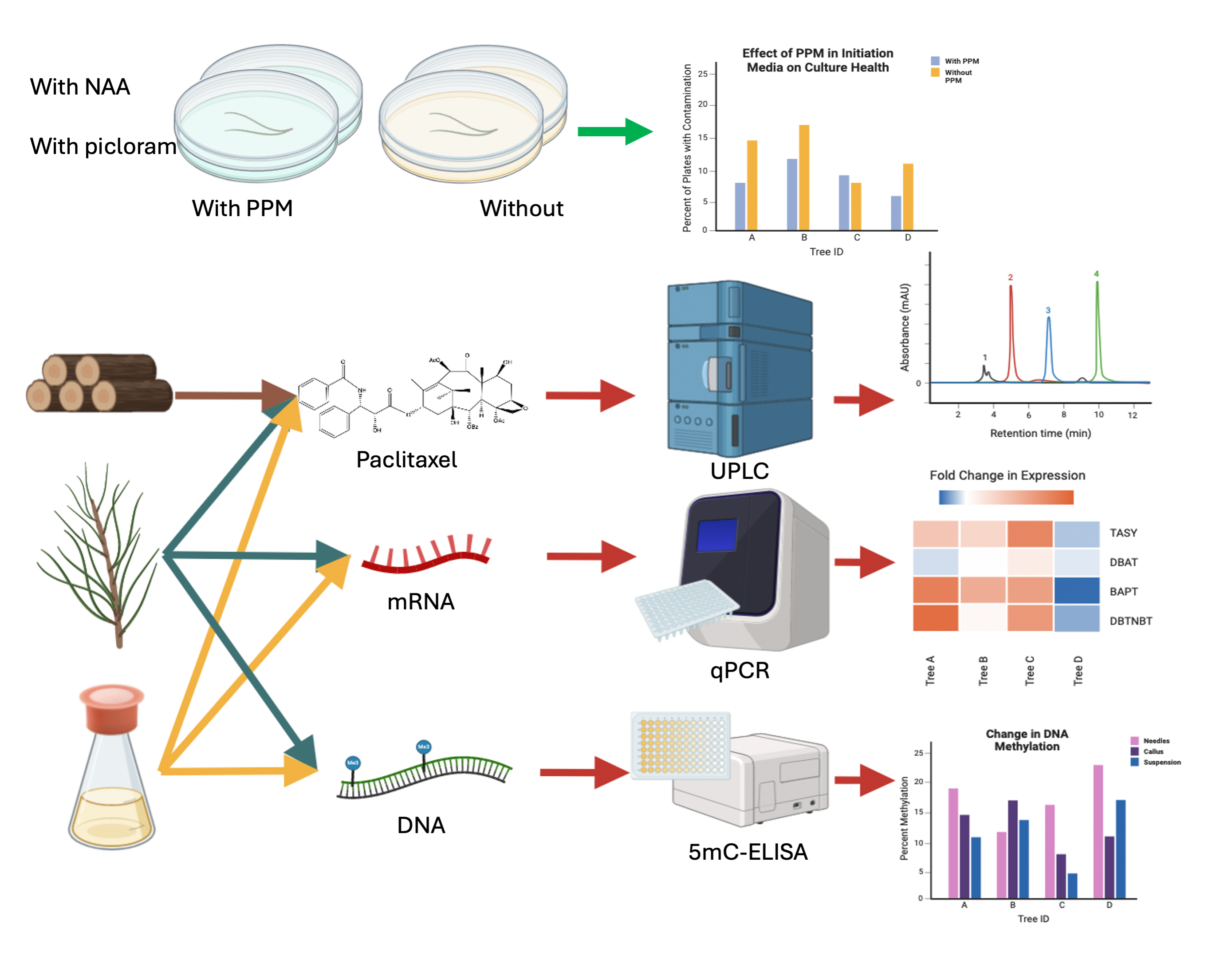(174k) Establishing and Characterizing Medicinal Plant Cell Lines for the Production of Anticancer Agents
AIChE Annual Meeting
2024
2024 AIChE Annual Meeting
Food, Pharmaceutical & Bioengineering Division
Poster session: Bioengineering
Monday, October 28, 2024 - 3:30pm to 5:00pm
In this work, we describe several routes of optimization for the culture of Taxus cells. To initiate new plant cell lines, needle clippings were collected from various yew species maintained in the Arnold Arboretum, sterilized to minimize contamination, spliced, and then plated on solid media. Components of the media, such as auxins and cytokines, were manipulated to promote growth, de-differentiation, and secondary metabolite production. The following were measured as success parameters: lack of contamination, new callus formation, growth rate, and visual appearance of callus.
The synthetic auxins 6’-benzylaminopurine (BA) and picloram were observed to promote the formation of callus cell cultures, with 68.8% of the needles plated on this media forming calli. When typical growth media, which exchanges picloram for 1-naphthaleneacetic acid (NAA), was used instead of initiation media, none of the plated needles formed callus. It is hypothesized that picloram is a key component in starting the plant cell de-differentiation process, and a study to validate this has been scheduled for the summer.
Additionally, we are developing a model that correlates the gene expression, paclitaxel production, and culture quality in a wider range of Taxus spp. trees to paclitaxel production on the flask scale, which ensures consistent initiation of high-producing cultures. Methyl jasmonate, a plant signaling compound that has been shown to increase the production of taxanes by tenfold or more, will be incubated with cultures collected from several specimens, including T. chinensis, T. x media, T. canadensis, T. baccata, T. cuspidata, T. floridana, and T. x hunnewelliana. Upon quantification of paclitaxel production from these cultures, qPCR will be used to measure the corresponding gene expression in its biosynthesis pathway, specifically via the rate-limiting TASY, DBAT, BAPT, and DBTNBT genes. DNA methylation will likewise be assessed as a metric for the epigenetic changes that occur over time through ELISA, as preliminary studies have demonstrated a significant increase in percent methylation after just one year in culture. Altogether, this approach will provide a comprehensive understanding of Taxus spp. initiation cultures at each point in their lifetime: from optimal culture conditions to minimize contamination, to their production of metabolites, and finally, to their genetic stability over the course of the culture.
